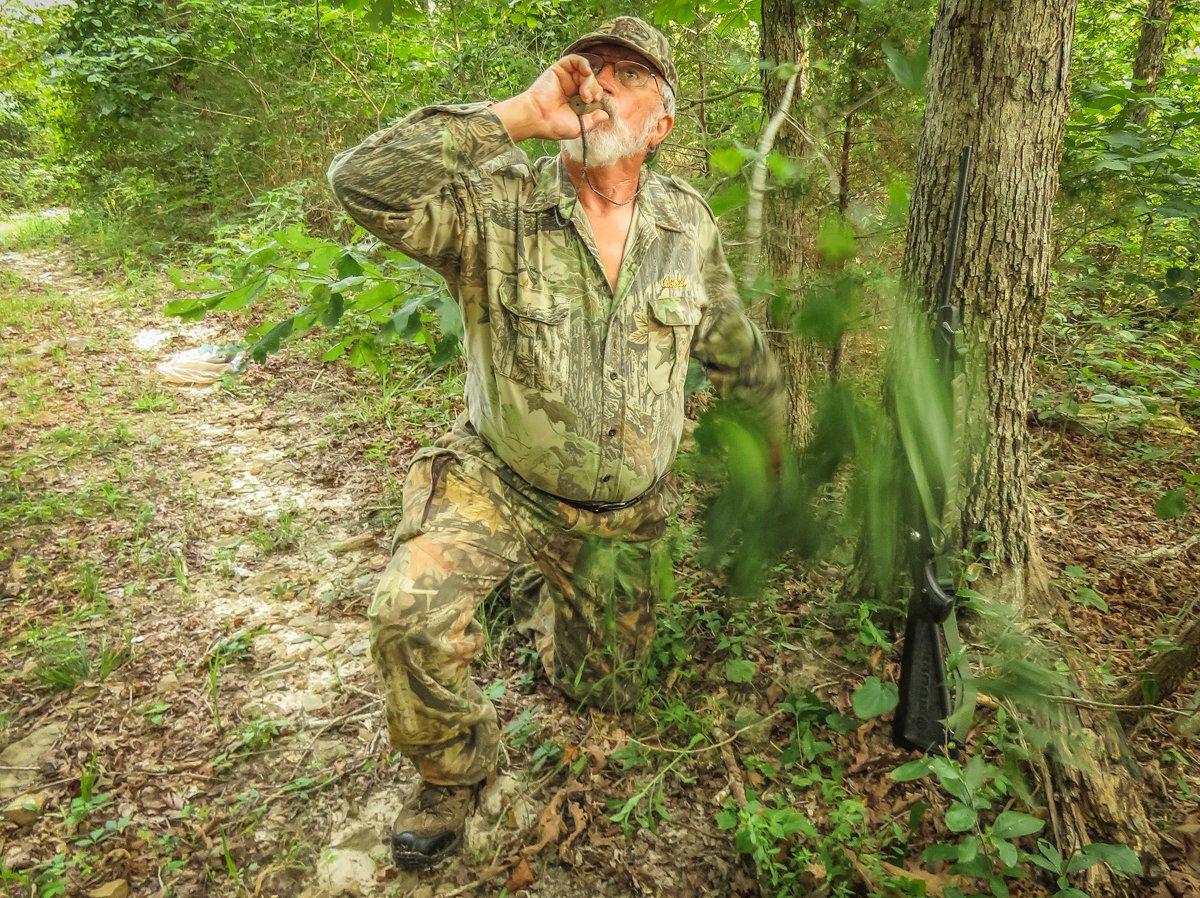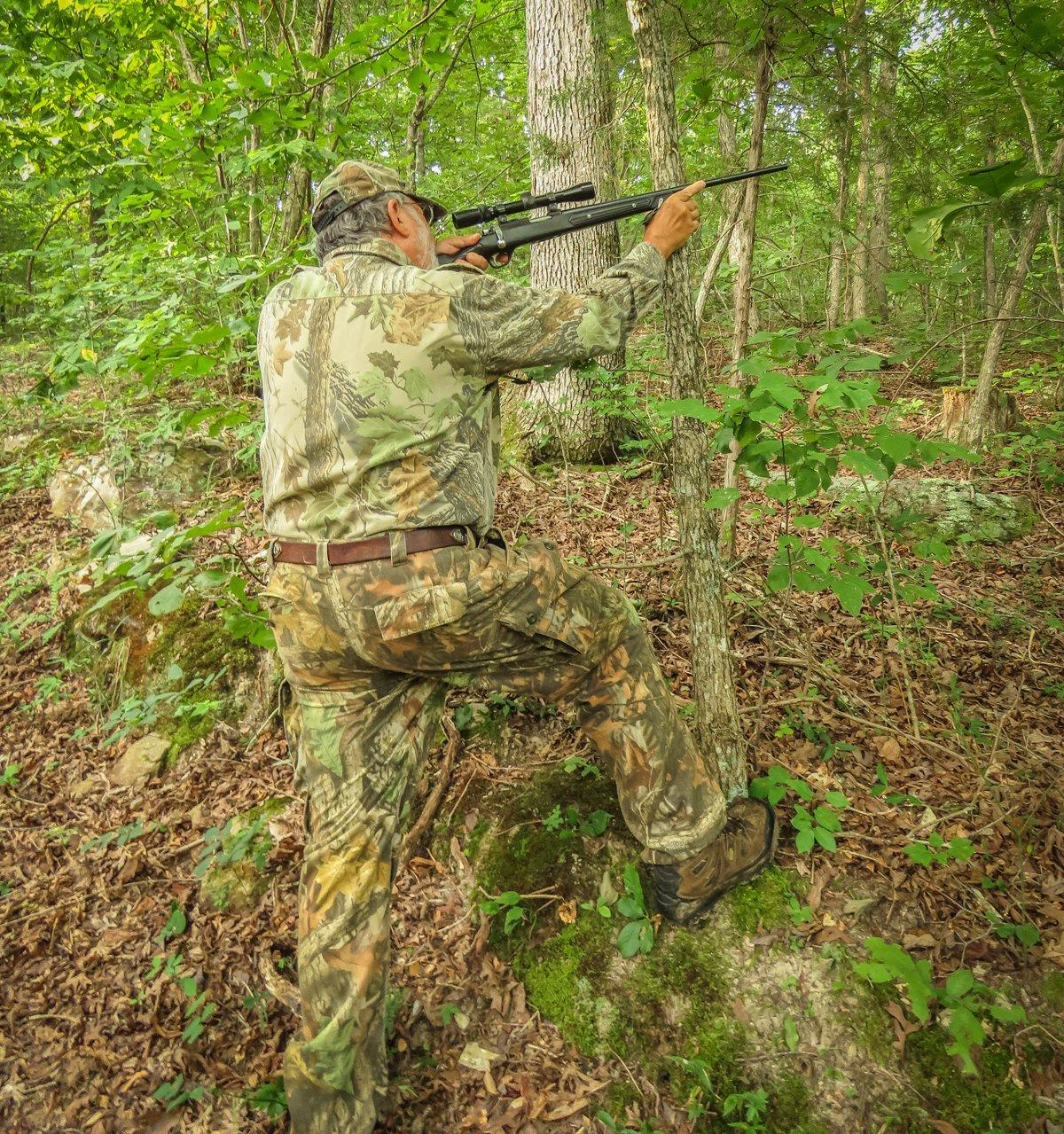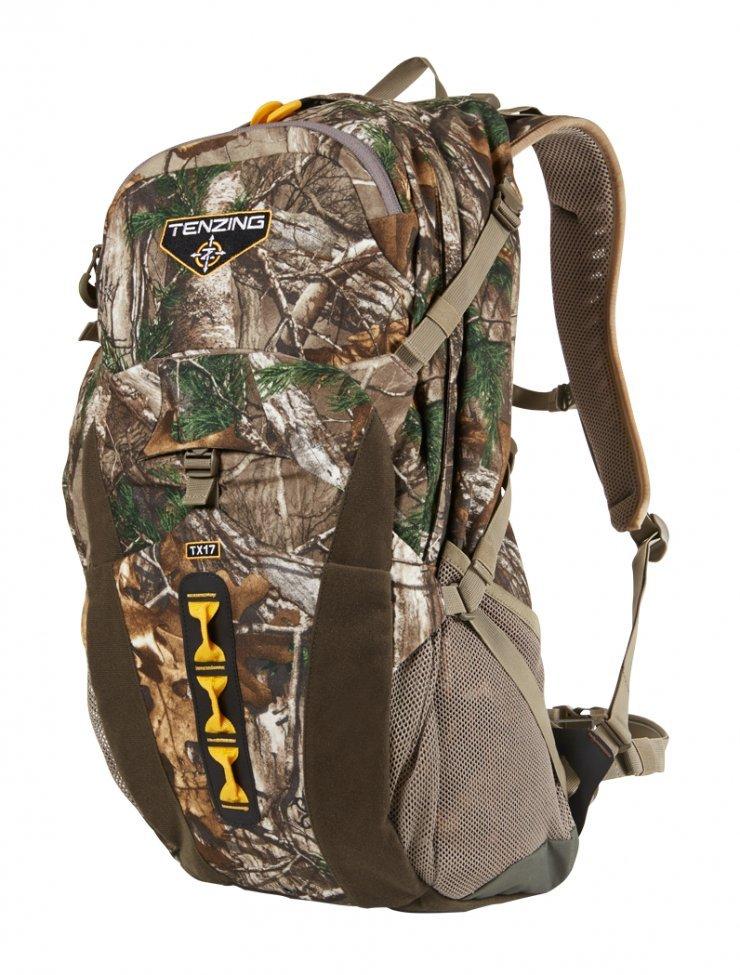How to Locate Squirrels by Calling to Them
Everybody knows you have to be quiet as a church mouse to be a good squirrel hunter. Right?
Well . . . that's one way. But it's not the only way.
First introduced in 1985 by a veteran squirrel hunter named Shannon Talkington from Lake Village, Arkansas, the Mr. Squirrel squeaker call ushered in a whole new way of doing things in the squirrel woods.
Shake, Squeak, Shoot
In the shake-and-squeak version of the hunt, the objective is to make squirrels give away their location by barking, and there's no better way to do it than using a squeaker call while simultaneously slapping a leafy branch against the ground. The commotion, according to Talkington, is supposed to sound like a young squirrel being caught by a hawk.
Whatever the squirrels think it is, it works. Not every time and not every day, but much more often than not. And the results can be spectacular.
When's the last time you found yourself surrounded by up to a dozen barking squirrels? It happens pretty often when you shake and squeak on the right day in the right place.
I killed my first squirrel when I was 10 and have been an ardent bushytail hunter for 60 years and counting, but I came to this shake-and-squeak stuff late. I was in my 30s when Talkington made his breakthrough, and although I heard about it early on, for a few years I ignored this new technique. My dad had taught me to hunt squirrels by the spot-and-stalk technique, and I was pretty good at it. Old habits die hard.
Shake and squeak is exactly what it sounds like. Shake the limb, squeak the call, listen for barking squirrels. Simple as that.
But in October 1990, I found myself stranded in the Missouri woods near Truman Lake with a friend and fellow squirrel hunter. We were supposed to be turkey hunting, but things got fouled up and we were there with tent and camping gear but no groceries other than a sack of potatoes. How we got into the predicament in the first place is a long story and not very interesting, but luckily Mike had brought a Lohman Game Calls version of the squirrel squeaker. In short order on a windy, rainy afternoon, he and I used that squeaker to bag enough squirrels to keep us well fed for the next two days, until we got rescued.
I've been a shake-and-squeak disciple ever since.
A generation or two ago, squirrels were among the most popular game species in the Eastern United States. Deer and turkeys were scarce, and travel was problematic. Squirrels, though, were readily available, and hunting them didn't require a big outlay of time or money. Old work clothes, a shotgun or .22 rifle, a pocketful of ammo and a convenient woodlot and you were set.
Today, though, it's becoming pretty rare to find a dedicated squirrel hunter. Deer and turkeys are plentiful, and TV shows, books, magazine articles and YouTube feeds tout them relentlessly. And since squirrels are much smaller quarry, and there's that having-to-be-quiet thing involved with it, it's much easier to sit in a blind and wait for a deer or turkey than to slip around through the woods trying to pot a few bushytails.
Realtree Video: How to Hunt Squirrels in the Spring
But if you want to stretch your hunting seasons, sharpen your stalking skills and collect the makings for some of the best wild-game recipes in the world, get yourself a squeaker call, dig out your Realtree turkey hunting duds, and try Talkington's squirrel hunting method. It'll hook you just like it did me.
Tenzing TX 15 in Realtree Xtra
Go here for this product.
There are quite a few brands of squeakers on the market today, and while this isn't meant to be a commercial for any of them, here's a partial listing of brands: Haydel's, Primos, Knight & Hale, Hunter's Specialties, Faulk's, Flambeau. No doubt there are others; this list came from a quick Internet search.
Regardless of brand, get a squeaker, not one of those bellows-style calls that imitate a squirrel barking. All the squeakers I'm familiar with are operated by blowing or sucking air through a small hole in the call. My personal preference is the Lohman version, now sold by Flambeau, but all of them I've tried work well.
How and When to Do It
This is strictly a spring-summer-fall hunting technique. It doesn't work very well in winter, when the hardwoods are bare, because the squirrels have a much better view of their surroundings. The hunting method is simplicity itself; all you do is find a leafy sapling or low-hanging branch, grasp it firmly, make a short series of two or three loud squeaks with the call, and then whack the branch against the ground or against a handy tree trunk for three or four seconds. Then stop and listen.
If squirrels are going to respond, it usually happens immediately, in the form of excited, angry barking from one or multiple animals. If there's no response at first, wait 20 seconds or so and repeat the sequence. If there's still no response, move quietly on through the woods a 100 yards or so, find another leafy branch and do it again.
Strictly speaking, these squeakers aren't really squirrel calls; they're squirrel locators. Sometimes a fox squirrel will come a long way to the commotion, barking furiously all the while, but gray squirrels almost never do that. They'll just bark at the racket from wherever they happen to be when they first hear it, and that's usually how fox squirrels react as well. Then it's up to you and your stalking skills to slip within shotgun or rifle range of the barking animal, spot it among the foliage, and make an accurate shot.
There's some disagreement among hunters regarding the best time of day to shake and squeak. Shannon Talkington always claimed late morning through mid-afternoon was best, and while I hesitate to argue with the guy who popularized this whole thing, I've always had more luck in early morning and late afternoon, morning much better than afternoon.
Also, those crisp, cool fall mornings with a heavy dewfall and no wind seem to be better than drier, warmer, breezy days. Clear weather seems better than cloudy, too, but there aren't any hard and fast rules in all of this. Squirrels are moody, like people; they bark when they want to, and ignore you when they want to. Nothing much you can do about it either way.
When it doesn't work, when you grab a bush and shake and squeak and the woods go silent the way you'd expect them to after you've made such a godawful racket, you feel like a fool. I suspect this feeling of foolishness is the major reason shake-and-squeak is still relatively uncommon among squirrel hunters, despite its proven effectiveness.
In a quiet, contemplative sport like squirrel hunting, somehow it doesn't seem proper to make that much noise on purpose.
I get that. I still find myself feeling a bit foolish shaking and squeaking, even when it works. But just as squirrel hunting is a contemplative sport, it's also a solitary one. You're probably out there in the woods all by yourself, so who's gonna see you? Swallow your embarrassment and give it a try. If it doesn't work (based on my own experiences, about one day in four, on average, will be a bust), try it again on another day.
I promise you, the first time you shake and squeak and suddenly find yourself surrounded by seven or eight furiously barking squirrels, so many you can't decide which one to stalk first, you'll be a disciple too.
Smother-Fried Squirrel Recipe
- Three squirrels, cut into pieces
- One sweet white onion, coarsely chopped
- Two-three stalks celery, coarsely chopped
- Three strips bacon, fried and crumbled
- Flour
- Salt
- Pepper
- Other seasonings to taste (Cavender's is hard to beat in this recipe)
Add salt, pepper and seasonings to flour; dredge squirrel pieces in seasoned flour and brown on both sides in a skillet using peanut oil. Remove from skillet and set aside. Pour off the oil and fry the bacon strips, then set aside as well. Cook the chopped onion and celery in the bacon grease until the onions begin to soften and clarify, then add several tablespoons of the seasoned flour to the skillet and stir until it begins to brown. Return the squirrel pieces to the skillet, add water to cover, crumble the bacon strips and add them to the skillet, cover and simmer until the squirrels are fork-tender (usually two to three hours). Serve with rice or mashed potatoes, ladling the gravy on top. Serves three, maybe four.
Go here for more Realtree small game hunting. Follow Realtree on Facebook.
You'll find even more recipes here in Michael Pendley's Timber 2 Table blog.
[Editor's note: This Realtree.com feature article was first published Sept. 5, 2017.]











